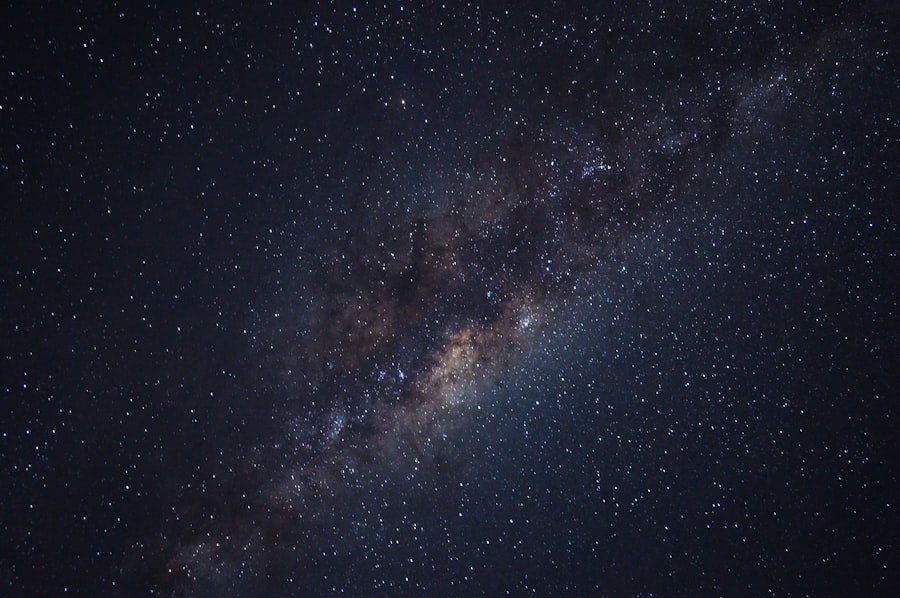The journey to space begins long before astronauts ever leave the ground. The training process is rigorous and multifaceted, designed to prepare individuals for the unique challenges of space exploration. Candidates undergo extensive physical and mental evaluations to ensure they possess the necessary resilience and adaptability.
This initial phase includes simulations that mimic the conditions of space travel, allowing astronauts to familiarize themselves with the spacecraft and its systems. They learn to operate complex machinery, conduct emergency procedures, and work as part of a cohesive team, all while under the pressure of time constraints and potential crises. In addition to technical training, astronauts engage in physical conditioning to prepare their bodies for the rigors of spaceflight.
This includes strength training, cardiovascular exercises, and specialized workouts to counteract the effects of microgravity. They also participate in survival training, which equips them with skills to handle unexpected situations, such as landing in remote areas upon return to Earth. Psychological preparation is equally crucial; astronauts undergo sessions designed to enhance their mental fortitude and coping strategies for the isolation and confinement they will experience during their missions.
This comprehensive training regimen ensures that astronauts are not only skilled operators but also resilient individuals capable of facing the unknown.
Launching into the Unknown: The Experience of Liftoff
The moment of liftoff is a culmination of years of preparation and anticipation. As the countdown reaches its final seconds, astronauts experience a mix of excitement and anxiety. The roar of the rocket engines ignites a powerful surge of adrenaline as the spacecraft begins its ascent into the sky.
The sensation of being propelled into space is unlike any other; the immense force of acceleration pushes them back into their seats, a reminder of the raw power required to escape Earth’s gravitational pull. This moment is not just a physical experience but an emotional one, as they leave behind the familiar world for the vast unknown. As the rocket climbs higher, the atmosphere outside transforms dramatically.
The blue sky fades into darkness, and the curvature of Earth becomes visible through the small windows of the spacecraft. Astronauts often describe this transition as surreal, a moment that solidifies their role as explorers of the cosmos. The initial jolt of liftoff gives way to a smoother ride as they reach orbit, but the thrill of leaving Earth never fully dissipates.
Each astronaut carries with them a sense of responsibility, knowing that they are part of a larger mission that extends humanity’s reach into space.
Living in Zero Gravity: Adapting to Space Conditions

Once in orbit, astronauts must quickly adapt to life in a microgravity environment. The sensation of weightlessness is both liberating and disorienting; simple tasks become complex challenges as objects float freely around them. Everyday activities such as eating, drinking, and personal hygiene require new techniques and tools designed for zero gravity.
For instance, astronauts use specially designed pouches for food and drink, ensuring that nothing escapes into the cabin and creates a hazard. Learning to navigate this new reality is an essential part of their daily routine. The psychological impact of living in space also plays a significant role in adaptation.
Astronauts often find themselves in confined quarters with limited social interaction, which can lead to feelings of isolation or cabin fever. To combat this, they maintain structured schedules that include work, exercise, and leisure activities. Regular communication with family and friends back on Earth helps alleviate feelings of loneliness and keeps them connected to their lives below.
The camaraderie developed among crew members becomes vital; they rely on each other for support and companionship during their time away from home.
Conducting Experiments and Research: The Scientific Mission
| Metrics | 2019 | 2020 | 2021 |
|---|---|---|---|
| Number of Experiments Conducted | 150 | 175 | 200 |
| Research Papers Published | 20 | 25 | 30 |
| Grant Funding Received | 500,000 | 600,000 | 700,000 |
Space missions are not solely about exploration; they are also critical for advancing scientific knowledge. Astronauts conduct a variety of experiments that take advantage of the unique conditions found in space. Research in microgravity allows scientists to study phenomena that cannot be replicated on Earth, leading to breakthroughs in fields such as biology, physics, and materials science.
The scientific mission requires meticulous planning and execution. Each experiment is carefully designed to maximize its potential impact while ensuring safety aboard the spacecraft.
Astronauts must be adept at following protocols and troubleshooting unexpected issues that may arise during experiments. Their work contributes not only to scientific advancement but also to practical applications that can improve life on Earth. The knowledge gained from these missions has far-reaching implications, influencing everything from medical treatments to environmental sustainability.
Spacewalks: Venturing outside the Spacecraft
One of the most exhilarating aspects of space exploration is the opportunity to conduct spacewalks, or extravehicular activities (EVAs). These ventures outside the spacecraft allow astronauts to perform maintenance tasks, conduct experiments, or simply experience the breathtaking view of Earth from above. Preparing for a spacewalk involves extensive training and practice in simulators that replicate the conditions they will face outside.
Astronauts don their bulky spacesuits, which provide life support and protection from the harsh environment of space. The experience of floating in space is both awe-inspiring and daunting. As they step out into the void, astronauts are enveloped by silence, broken only by the sound of their own breathing through their helmets.
The vastness of space stretches out before them, offering an unparalleled perspective on the universe. During these moments, astronauts often reflect on their place in the cosmos and the significance of their mission. Spacewalks are not just technical tasks; they are profound experiences that deepen their connection to humanity’s quest for knowledge and exploration.
The View from Above: Observing Earth from Space

From their vantage point in orbit, astronauts have a unique opportunity to observe Earth in ways that few others can. The view is nothing short of breathtaking; continents and oceans unfold beneath them like a living map, revealing the planet’s beauty and fragility. Many astronauts describe this perspective as transformative, fostering a deep appreciation for Earth’s ecosystems and interconnectedness.
Witnessing natural phenomena such as auroras or thunderstorms from above adds to the wonder of their experience. This extraordinary view also serves as a reminder of humanity’s responsibility to protect the planet. Astronauts often return with a renewed sense of purpose, advocating for environmental awareness and sustainability efforts based on what they have seen from space.
The “Overview Effect,” a term coined by those who have experienced this phenomenon, encapsulates how seeing Earth from afar can shift one’s perspective on life and inspire action toward preserving it for future generations.
Overcoming Challenges: Dealing with Isolation and Communication Delays
While space exploration offers incredible experiences, it also presents significant challenges, particularly regarding isolation and communication delays. Astronauts live in confined spaces for extended periods, which can lead to feelings of loneliness or stress. The absence of familiar surroundings and loved ones can weigh heavily on their mental well-being.
To cope with these challenges, astronauts engage in regular communication with mission control and family members through video calls or messages, providing a vital link to life back on Earth. However, communication is not instantaneous; signals take time to travel between Earth and space due to the vast distances involved. This delay can complicate decision-making processes during critical moments when immediate feedback is necessary.
Astronauts must be trained to think independently and make decisions based on their training and experience rather than relying solely on guidance from mission control. This level of autonomy fosters confidence but also requires mental resilience as they navigate both technical challenges and emotional hurdles during their missions.
Returning to Earth: The Journey Home and Readjusting to Gravity
The return journey to Earth marks another significant phase in an astronaut’s mission. As they re-enter the atmosphere, they experience intense heat and pressure, a stark contrast to the weightlessness they have grown accustomed to in space. The descent is carefully calculated; astronauts must follow precise protocols to ensure a safe landing.
As they approach Earth, anticipation builds—each astronaut looks forward to reuniting with loved ones but also grapples with the reality of returning to gravity after months in microgravity. Upon landing, astronauts face a period of readjustment as their bodies reacclimate to Earth’s gravitational forces. Simple tasks like walking or standing can feel challenging at first; muscles that have weakened during months in space must be retrained for everyday activities.
Physical therapy becomes an essential part of their post-mission routine as they work to regain strength and endurance. Additionally, many astronauts report experiencing profound emotional shifts upon returning home; they often find themselves reflecting on their experiences in space and how it has changed their perspectives on life. In conclusion, the journey into space is an extraordinary endeavor that encompasses rigorous training, thrilling experiences during liftoff, adaptation to unique conditions, scientific exploration, breathtaking views, emotional challenges, and eventual reintegration into life on Earth.
Each aspect contributes to a profound understanding of humanity’s place in the universe and highlights the importance of continued exploration beyond our planet’s boundaries.
Did you know that astronauts in space have a unique perspective on natural disasters like tornadoes? According to a recent article on tornadoextreme.com, predicting tornadoes can be a challenging task on Earth.
Astronauts have also observed rare phenomena like waterspout tornadoes, as discussed in another article on tornadoextreme.com. The combination of space technology and astronaut observations offers a new perspective on understanding and potentially predicting tornadoes.

